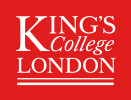© Pint of Science, 2025. All rights reserved.
The very big, the very small, the very old ...the slightly tipsy. A top scientist will tell us about the universe’s first steps and we will try to catch some particles in a fish tank.
This event is also supported by the department of Physics, King's College London.
This event is also supported by the department of Physics, King's College London.
Seeing particles (with low budget)
Krzysiek Bożek
(Research Student)
Particle Physics might often seem uncomprehending as it deals with the tiniest elements of our universe. Large experiments or theories involving extra-dimension might make you think that particle physics is detached from reality, only visible in expensive labs. We will show that this is not true, particle physics is all around us and one can see it with low-cost, home-made detectors. With a Geiger counter we will see how much natural radiation there is around us, while with a cloud chamber, we will be able to see tracks of particles with naked eyes!
Why is the Universe so big and old?
John Ellis
(Professor of Theoretical Physics )
Cosmological inflation is a proposal that for a while, very early in its history, something like the Higgs boson (maybe the Higgs itself?), made the Universe expand very fast. This could explain why the Universe is so large and has not (yet) collapsed.It could also explain why Euclidean geometry (almost) works. Quantum effects during inflation could have generated the structures seen in the Universe today, such as galaxies, clusters and Donald Trump (?). Measurements of the cosmic radiation test models of inflation, and may connect particle physics, quantum gravity and perhaps string theory.
Science and fiction: the science of Star Wars
Thomas Elghozi
(Research student)
What is the energy source in the Death Star? Is a lightsaber made of light? In this talk, we will focus on some emblematic artifacts or scenes of the Star Wars saga, in order to try to understand the physics underlying the world presented in there and to explain how things work. Hopefully, we can nicely learn about our own world by looking at the science in fictions.
Map data © OpenStreetMap contributors.

